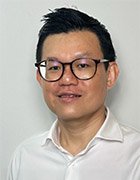
Andriy Solovyov - Fotolia
Rio Tinto overhauls IT operations with platform model
Rio Tinto’s head of technology platforms outlines the mining giant’s move to an IT platform model designed to escape a reactive cycle of critical incidents and improve service quality for internal and external customers
Rio Tinto’s journey towards operating an IT platform model was detailed by Remona Murugan, the company’s head of technology platforms, during a fireside chat at the recent Gartner IT Infrastructure, Operations and Cloud Strategies Conference in Sydney.
Murugan is responsible for services including modern digital workplace, network, cloud computing, integration, developer experience, shared platforms such as enterprise resource planning, and operational technology applications supporting mining and processing activities. Her remit means she supports users ranging from mine workers to corporate staff, including those in other parts of the IT organisation.
In her previous role as head of operations, Murugan witnessed up to 15 critical incidents a month, with the same problems repeatedly resurfacing. “The first thing I had to work out was how I would get out of the reactive cycle. The team was exhausted,” she observed.
The answer was to move to a platform and product management model, and prioritise access to digital technology, cloud computing and identity. “That really helped us look at our workforce strategy and the skills we needed to effectively deliver the transformation, as well as our partner ecosystem.”
Murugan also highlighted past challenges: “When you’re under severe cost pressure, you’re signing contracts for the lowest cost and not really thinking about service quality, so [we were] trying to unwind that.”
Rio Tinto also implemented a chapter and domain model across the IT function. Murugan is one of the chapter leaders. Some of her team work on the technology platforms while others are deployed to projects around the business.
“When you’re trying to do something like this, having a compelling story or change narrative [is important], because people want to understand what’s different for them and how,” said Murugan.
One benefit of this arrangement is that individuals no longer need to move into managerial positions to progress their careers. “We know that not everyone wants to be a people leader, you want to keep refining and improving your craft and stay on technology, and you have to be able to have a career pathway to do that.”
A significant people challenge, Murugan explained, was adapting to new gaps or opportunities discovered during roadmap implementation. These required further team changes and careful management.
Demand management was another hurdle. “How do you actually understand what work is coming at you, how do you prioritise that, and how do you make sure you have the right capacity?” This is partly addressed by improving standard offerings, she said.
To avoid constant approval cycles, Murugan also put in place a federated governance model with the cyber security and enterprise architecture teams, so they do not have to seek approval each time they want to do something. “We’ve established that partnership of trust where they understand we’ve got it, and we just have engagements where there’s material change that we need to have a conversation about,” she said.
Adopting a platform approach allows Rio Tinto to offer a selection of cloud computing products, enabling faster environment provisioning. Similarly, the platform provides a standard catalogue of integrations, with a dedicated team deciding on new integration builds.
A broader change involved developing a complementary asset management strategy and securing approval from the investment committee. “We have an annual sustaining capital budget, which I get to spend with my team, and we prioritise that to make sure we’re not waiting for a 12-month funding cycle. We have our roadmaps, we have some funding, and we can make a big difference.”
Murugan also instigated a shift from merely “doing the work of IT” to applying IT to enhance Rio Tinto’s core mining business. “We’re still working through that, but it was quite a mindset change for the team.”
One result was that IT has moved out of the background and there is more sharing of knowledge, expertise and ideas across the business as a whole, although she noted that it does take time for some IT people to become comfortable talking to internal customers.
Read more about IT in Australia
- As the demands of motorsports grow, Supercars team Brad Jones Racing turns to IT specialist Extranet Systems to manage crucial areas such as security, backup and disaster recovery.
- Australian organisations are set to spend A$6.2bn on security and risk management in 2025, a 14.4% jump from the previous year, driven by the rise of AI and a growing threat landscape.
- Low-cost carrier Jetstar is using the Snowflake data platform to optimise the number of meals to carry onboard and to generate flight schedules, among other data analytics initiatives to improve its operations.
- Federal government signs three-year whole-of-government agreement with Amazon Web Services, expanding access to cloud services for all levels of government.
Rio Tinto invested in organisational change management to understand potential impacts, take stock of capabilities, and, crucially, fund training and certification – areas previously neglected due to cost-cutting – rather than just creating staff development plans.
“What I’m most proud of is we’ve been able to maintain quite a good level of employee satisfaction through the change,” said Murugan, despite a slight dip when the chapter model was first implemented.
She added: “None of my customer meetings are about escalations anymore. It’s the best thing.” Critical incidents have plummeted from up to 15 to fewer than three a month, with none reported over the Christmas period.
Other key performance indicators are also starting to improve, including cycle time and customer satisfaction, even though her teams are not at the same level of maturity because they started the process at different times. “I think it’s really important to scale our model so that we really can benefit from engineering across the full stack of technology,” she said.
These significant changes to IT execution were not implemented overnight. Murugan estimates it took five months to design the new model, followed by three months to reorganise staff. “We are in year four of a five-year roadmap. Year one was around getting the noise out of the system and building those critical capabilities I talked about earlier, and then year two was around getting into automation and simplifying how we do work and [work with] our partners. It’s been an evolution since then.”
The next opportunity, she thinks, is around product management – gathering customer feedback on whether the roadmap can deliver the anticipated value. “We have these great ideas, [but] is it going to help us get more production? Is it going to help us be safe, or is it going to help us make more money?”
Ongoing challenges include encouraging wider adoption of new standards and patterns. For instance, Murugan noted a higher-than-desired number of SharePoint sites compared to Teams sites. This indicates the platforms group must simplify adoption and ensure they don’t become a bottleneck in value delivery.
While the group has embarked on its AIOps journey, Murugan said it must continue to eliminate waste and enhance automation to maximise engineering and transformation capacity.
Asked for a single piece of advice based on her experience, Murugan observed that although people can hear what you’re saying, nothing beats seeing something in practice if you want them to apply an idea to their work. “You just need one example to get people to pay attention and know that you’re serious about the change.”










